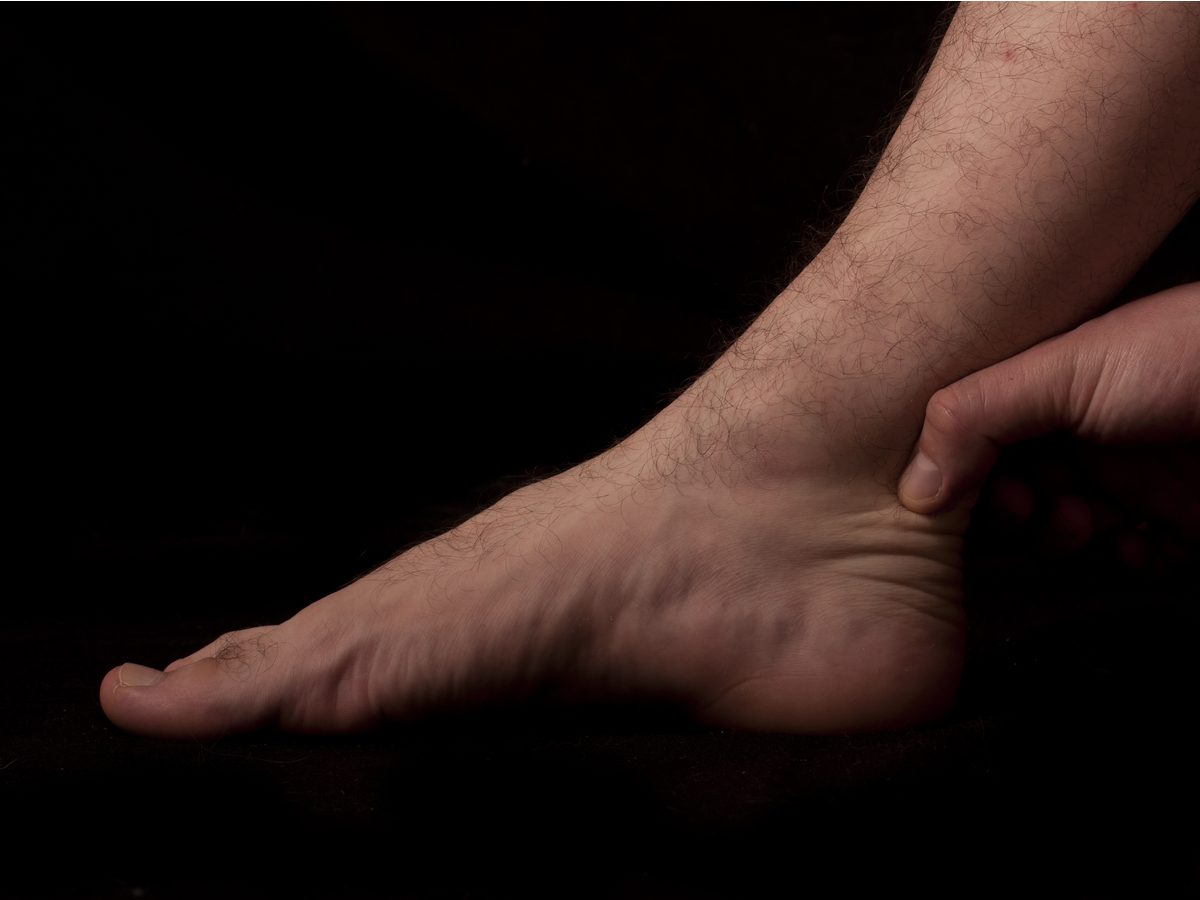
What’s Wrong with Me?
The patient: Graham (named changed), a 41-year-old naval officer
The symptoms: Spontaneous soft-tissue injuries
The doctor: Dr. Volodko Bakowsky, rheumatologist at QEII Health Sciences Centre, Halifax
Graham was an active family man who played soccer regularly and preferred walking to taking the car. In his early 30s, he’d gone to the doctor with a sore, swollen big toe on his right foot. The naval captain thought he might have broken it kicking a ball, but was surprised to learn he had gout, a type of inflammatory arthritis caused by high uric acid in the blood. Since then, Graham had been doing well on a medication to lower his uric acid levels.
Other injuries, though, were perplexing. One morning in 2011, about five years after the gout diagnosis, Graham woke up with a right knee so painful he could barely walk. The MRI ordered by Graham’s Canadian Forces doctor in Toronto showed a torn quadriceps tendon, which was odd. Graham had sustained a similar injury years before when he tackled another soccer player. But this time, he couldn’t think of anything he’d done to hurt himself.
With physiotherapy, Graham’s quad gradually healed. Then, later that same year, his right Achilles tendon partially separated while he was sleeping. This was even more agonizing than the knee injury. “I was really worried,” says Graham. “I thought, what’s going on here?”
Were these mystifying injuries related to the arthritis, or something else entirely? It wasn’t fun waking up to searing pain that took weeks to heal, and Graham wanted to prevent it from happening again.
Learn about more health symptoms you shouldn’t ignore.

A Modern Sailor with Scurvy?
After relocating in 2013 to Halifax, where he had regular access to a doctor, Graham decided to investigate the injuries. The physician referred him to Dr. Volodko Bakowsky at QEII Health Sciences Centre, asking him to confirm that Graham indeed had gout, and whether it had anything to do with the unexplained soft-tissue tears. “When things get weird, patients often get sent to a rheumatologist,” Bakowsky says. But from Graham’s story—he had a family member with gout, and the medication seemed to be controlling the uric acid—Bakowsky saw no reason to doubt the diagnosis.
The rest of Graham’s medical history didn’t seem remarkable. A previous blood test had found him low in vitamin C, but Graham had been trying to compensate by eating more oranges. He’d seen a gastroenterologist after a family trip to Italy—his stomach had bothered him after eating rich meals with red wine—but that specialist had simply advised him to ease up on the merlot. Otherwise, Graham was in good shape, says Bakowsky. “He was as fit as a fiddle, and his diet was fine.” As for the recurrent soft-tissue injuries, Bakowsky suspected Graham had been overdoing his physical activity. “I thought this guy just didn’t realize once you’re 40, things start falling apart!”
Graham wasn’t about to be dismissed, however. He was certain something strange was causing his injuries. Bakowsky recalls that as he tried to wrap up the appointment, his patient continued to persist with questions. “He deserves a lot of the credit. He didn’t let the issue go.”
Bakowsky ordered a couple of additional tests. “I tried to work backwards and thought, What would cause tendon injuries with minimal trauma?” Scurvy came to mind. It’s caused by vitamin C deficiency; famously, sailors used to get it when their diet at sea lacked fresh fruits and vegetables. The vitamin is essential for maintaining connective tissue, so without it, muscles and tendons are more vulnerable to damage. But scurvy is not normally seen in Canada, where people have access to quality produce. Less than 3 per cent of Canadians are deficient in vitamin C.
“I thought, how can somebody possibly have scurvy when they’re eating fruits and vegetables?” says Bakowsky. “The only way would be celiac disease.” In people with this autoimmune condition, eating wheat and other grains with gluten causes damage to the walls of the small intestine and eventually interferes with nutrient absorption. Bakowsky ran a test for celiac disease, assuring his patient it would come back negative.
Find out the signs you aren’t getting enough vitamins.

Diagnosis: Celiac Disease
A negative result for celiac disease was not the case, however. “It was strongly positive,” says Bakowsky. On a subsequent vitamin C test, Graham’s level was undetectable.
The diagnosis of celiac disease, later confirmed by a gastroenterologist, probably explained why Graham’s stomach had been upset in Italy. “It wasn’t the wine. I’ll bet it was the pasta,” he says. He’d noticed no other symptoms, which is not uncommon.
Close family members of someone with celiac disease have a one in 10 chance of developing it themselves (in the general population, it’s one in 100). Graham’s children were fine, but his mother and niece were tested and discovered they, too, have the condition. Graham even suspects his late grandfather may have had it, because he’d often complained of tummy issues.
These days, at family gatherings, the menu is entirely gluten-free. A change of diet isn’t easy, says Graham, who sorely misses baguettes, but it’s an immediate fix, and it will help prevent future complications like osteoporosis. “I’m really happy that this doctor figured out this family issue we’ve probably had forever.”
The irony of having scurvy isn’t lost on Graham. “Being a naval officer, it’s kind of funny,” he admits.
Next, check out the signs of disease that are written all over your face.